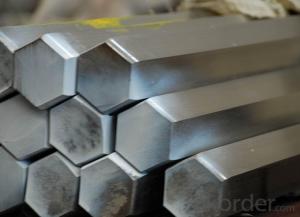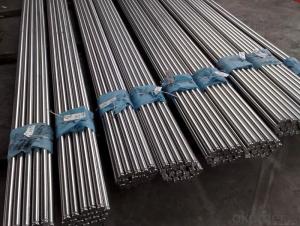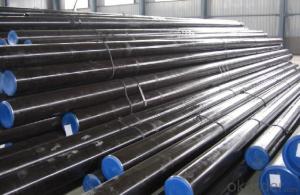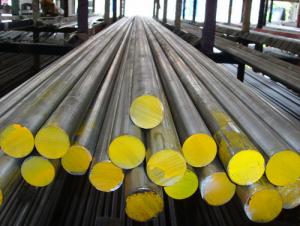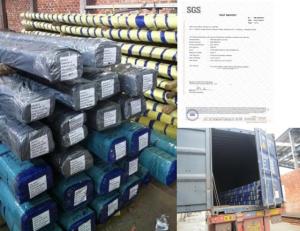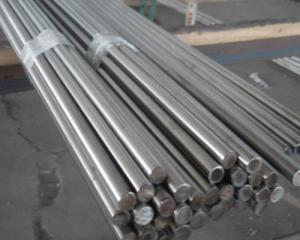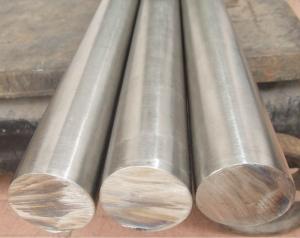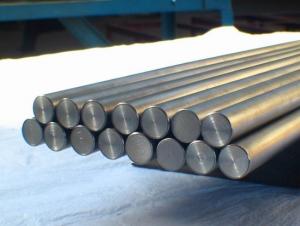Painting Stainless Steel Black
Painting Stainless Steel Black Related Searches
Best Paint For Stainless Steel Blanket Insulation For Steel Buildings Primer For Galvanized Steel Foam Filter For Stainless Steel H S Code For Stainless Steel Surface Grinding Wheels For Stainless Steel Surface Grinding Wheels For Hardened Steel Hole Saw For Stainless Steel Paint For Stainless Steel Stainless Steel For BbqHot Searches
Steel Mesh Panels For Sale Price For Stainless Steel Scrap Scrap Price For Stainless Steel Price For Stainless Steel Stainless Steel Tank For Sale Stainless Steel Sheets For Sale Cheap High Tea Sets For Sale Stainless Steel Tanks For Sale Stainless Steel For Sale High Density Fiberboard For Sale Solar Hot Water Collectors For Sale Scaffolding For Sale In Uae Scaffolding For Sale In Ireland Scaffolding For Sale In Houston Type Of Inverter For Solar Price Of Shipping Containers For Sale Types Of Inverter For Solar Stock Price For Aluminum Used Solar Inverter For Sale Steel Mesh Panels For SalePainting Stainless Steel Black Supplier & Manufacturer from China
Okorder.com is a professional Painting Stainless Steel Black supplier & manufacturer, offers integrated one-stop services including real-time quoting and online cargo tracking. We are funded by CNBM Group, a Fortune 500 enterprise and the largest Painting Stainless Steel Black firm in China.Hot Products
FAQ
- Stainless steel bars are certainly suitable for the production of pumps and valves. This material is highly adaptable and resistant to corrosion, making it an excellent choice for applications that require durability and dependability, such as manufacturing pumps and valves. The strong and lightweight nature of stainless steel bars allows for the creation of sturdy and long-lasting parts, ensuring the pumps and valves operate efficiently and effectively. Moreover, stainless steel's ability to resist corrosion, rusting, and staining makes it appropriate for various environments, including those involving exposure to chemicals, liquids, and high temperatures. In summary, incorporating stainless steel bars into the manufacturing process of pumps and valves guarantees their durability and performance, making them vital components for industrial purposes.
- Stainless steel bars are indeed available in a variety of shapes. You can come across them in different forms like round bars, square bars, hexagonal bars, flat bars, and even hollow bars. Each shape performs distinct functions and finds application in diverse industries. Construction and engineering projects commonly utilize round bars, while square bars are frequently employed in manufacturing and fabrication purposes. Hexagonal bars primarily cater to the automotive and aerospace industries, and flat bars are often seen in architectural applications. Hollow bars, on the other hand, find use when lighter weight and increased strength are necessary. In summary, stainless steel bars are adaptable and can be procured in a wide array of shapes to cater to various requirements and purposes.
- Compared to aluminum bars, stainless steel bars exhibit superior strength and durability. Stainless steel possesses a higher tensile strength, enabling it to withstand greater levels of stress before experiencing deformation or breakage. Moreover, its yield strength is also higher, signifying its capacity to resist permanent deformation when subjected to loads. Additionally, stainless steel boasts exceptional corrosion resistance, allowing it to maintain its strength even in harsh environments. Conversely, although aluminum bars are lightweight, they lack the overall strength that stainless steel possesses. While aluminum is commonly utilized in applications prioritizing weight reduction, stainless steel bars are the preferred choice in situations demanding high strength and robustness.
- Indeed, the automotive industry finds stainless steel bars to be a suitable choice. Stainless steel, a versatile and dependable material, offers numerous advantages for automotive purposes. It is renowned for its exceptional strength, durability, and ability to resist corrosion. Consequently, it becomes an ideal option for parts and components that must endure harsh environments and challenging conditions. For various applications in the automotive industry, stainless steel bars are commonly employed. These applications include the manufacturing of exhaust systems, suspension components, engine parts, and body panels. The high ratio of strength to weight that stainless steel possesses allows for the creation of lightweight yet robust components. This, in turn, enhances the fuel efficiency and overall performance of vehicles. Moreover, the resistance to corrosion that stainless steel possesses plays a crucial role in the automotive industry. Given that vehicles are exposed to moisture, chemicals, and other corrosive elements, this property ensures the longevity and reliability of automotive parts. As a result, maintenance and replacement costs are reduced. In addition, stainless steel bars can be easily machined and formed into intricate shapes. This provides manufacturers with design flexibility, enabling them to create innovative automotive components. Furthermore, the material is highly recyclable, aligning with the growing emphasis on sustainability and environmental consciousness in the automotive industry. To summarize, stainless steel bars are well-suited for the automotive industry due to their strength, durability, resistance to corrosion, design flexibility, and recyclability. Consequently, they are extensively utilized in various automotive applications, contributing to the production of high-quality and dependable vehicles.
- Both cold drawn and peeled stainless steel bars are popular for various applications, but they differ significantly in terms of how they are manufactured and the properties they possess. To produce cold drawn stainless steel bars, the raw material is pulled through a series of dies at room temperature. This process enhances the steel's mechanical properties, including its tensile strength and hardness. It also improves the surface finish and dimensional accuracy, resulting in a smooth and shiny appearance. Cold drawn bars are ideal for applications where aesthetics play a crucial role. Furthermore, they exhibit closer dimensional tolerances and a more uniform microstructure compared to other manufacturing methods. On the contrary, peeled stainless steel bars are manufactured by removing the outer layer of the bar through a peeling process typically conducted at high temperatures. This process eliminates any imperfections or surface defects, resulting in a smooth and clean surface finish. Peeling also enhances the straightness and roundness of the bar, making it suitable for applications where precise dimensions and alignment are crucial. However, the peeling process does not significantly impact the steel's mechanical properties, meaning that peeled bars may possess similar properties to the original material. In summary, the primary distinction between cold drawn and peeled stainless steel bars lies in their manufacturing processes and resulting properties. Cold drawn bars undergo a cold drawing process to enhance mechanical properties and surface finish, while peeled bars undergo a peeling process to improve surface quality and dimensional accuracy. Thus, the selection between the two options depends on the specific requirements of the application, such as the desired mechanical properties, surface finish, and dimensional tolerances.
- Stainless steel bars may encounter various surface defects, including the following: 1. Pitting: The surface of a stainless steel bar may exhibit localized corrosion known as pitting. This can result from exposure to corrosive environments, inadequate cleaning or passivation processes, or chemical reactions. 2. Scale: A layer of oxides can form on the surface of a stainless steel bar, resulting in scale. This can arise during manufacturing or due to high temperatures during usage. Scale can negatively affect the appearance and corrosion resistance of the stainless steel. 3. Scratches and gouges: During handling, transportation, or processing, stainless steel bars can acquire scratches and gouges. These defects compromise the integrity and aesthetics of the bar, making it more susceptible to corrosion and other forms of damage. 4. Roll marks: The manufacturing process can leave impressions or indentations on the surface of a stainless steel bar, referred to as roll marks. The severity of these marks can vary and impact the appearance and performance of the bar. 5. Inclusions: Embedded foreign particles or impurities on the surface of a stainless steel bar are known as inclusions. Improper melting or casting processes, manufacturing contamination, or poor quality control can contribute to their formation. Inclusions can lead to localized corrosion or mechanical failures in the stainless steel. 6. Decarburization: High-temperature processes like annealing or heat treatment can result in the loss of carbon from the surface of a stainless steel bar, causing decarburization. This reduces the mechanical strength and hardness of the stainless steel, making it more prone to wear and deformation. It is crucial to recognize that the severity and impact of these surface defects may differ based on the specific application and industry requirements. Regular inspection, quality control measures, and appropriate handling and storage practices can help minimize the occurrence and consequences of these defects in stainless steel bars.
- Due to its composition and properties, stainless steel bars possess a natural resistance to phosphoric acid. Stainless steel primarily comprises iron, chromium, and nickel, with smaller amounts of other elements added to enhance specific characteristics. The high chromium content in stainless steel generates a protective oxide layer on the surface, referred to as the passive layer. This layer acts as a barrier, preventing direct contact between the phosphoric acid and the underlying steel. Chromium forms a stable oxide film that is highly corrosion resistant, offering excellent protection against phosphoric acid. Moreover, stainless steel bars also contain nickel, which boosts the material's resistance to corrosion. Nickel aids in stabilizing the passive layer and provides additional safeguarding against acidic environments, including phosphoric acid. Aside from its chemical composition, stainless steel bars are renowned for their mechanical properties, such as strength and durability. These properties increase the resistance of stainless steel bars to the physical impact of phosphoric acid, reducing the risk of damage or corrosion. In summary, the combination of chromium, nickel, and other elements, along with the mechanical properties of stainless steel bars, contribute to their exceptional resistance to phosphoric acid. This characteristic makes stainless steel bars the preferred choice in applications where exposure to phosphoric acid is anticipated, such as in chemical processing, food and beverage industries, and various other corrosive environments.
- The flexural strength of stainless steel bars generally varies based on the specific grade and composition of the stainless steel being used. Stainless steel is known for its high strength and resistance to corrosion, but the flexural strength can still vary depending on factors such as the alloying elements, heat treatment, and manufacturing process. In general, stainless steel bars have a good flexural strength compared to other materials, making them suitable for various applications that require high strength and resistance to bending or flexing. The flexural strength of stainless steel bars can range from around 170 to 600 megapascals (MPa), depending on the specific grade and conditions. It is important to note that the flexural strength can also be influenced by factors such as the size, shape, and surface condition of the stainless steel bars. Additionally, the presence of any defects or imperfections can affect the flexural strength. To determine the exact flexural strength of stainless steel bars for a specific application, it is recommended to consult the manufacturer's data sheets or perform mechanical testing according to relevant standards.




































